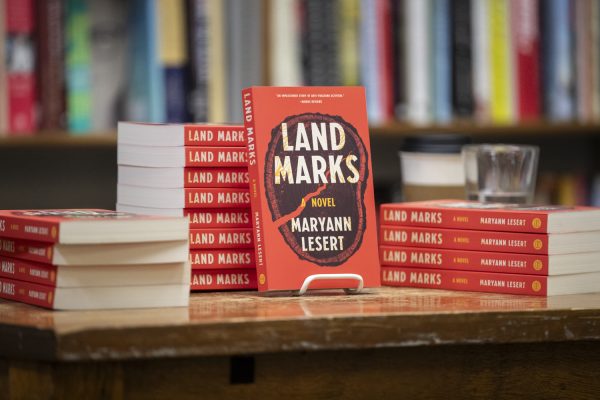Maryann Lesert is a writer, activist, and professor who has written three full-length plays, five one-act plays, and articles regarding sustainability and environmental activism. A Michigan native, her plays have been published by New Issues, and her articles in EcoWatch and These Times.
Her newest novel, “Land Marks,” focuses on a college professor and her former students as they fight against a major oil fracking organization before any ecological ruin can come to their homes. Falling into a genre sometimes labeled as environmental fiction or eco-fiction, “Land Marks” tells a gripping tale of how activism brings people together and pushes them into making change.
The Daily Iowan: Did your past works have a hand in creating “Land Marks”?
Lesert: The thing that ties all of my work together is the presence of the natural world. For instance, in my first novel, “Base Ten,” a big part of the Michigan landscape is in that story. The characters are very affected by it. In fact, one of the characters takes a ten-day solo trip back-country camping, trying to get herself back together.
So, that presence of the natural world, almost like another character, or maybe even the most important character in the novel is definitely something that appears in almost every work I write. Sometimes, what I write is often called environmental fiction, if we’re talking about my books. Sometimes the broader term is eco-fiction; the idea that the natural world is very present.

How long did writing “Land Marks” take, and what was the process of doing so?
About 2012-2015, was when deep shale fracking and horizontal hydraulic fracking came to Michigan. And it was happening predominantly in our state forests. So, I set out as somebody who’s interested in the environment to learn as much as I could about it, and I spent about two years of what I call my ‘boots-on-well-sites’ research.
I was going out there to learn about fracking, to photograph it, to bring it back. I was presenting all around the state and sharing my photos and my research because it was important to me to tell the sensory story of fracking. Not just the science, I also wanted people to understand what a level of industrial might this was. It changes the forest forever.
Even though I was researching something that caused me great grief, I experienced this incredible solidarity. There was an environmental education center in lower Southwest Michigan called Circle Pine Center, and they opened their doors to anybody who wanted to meet and share stories and research.
All these people came together: educators, water well drillers, members of indigenous communities, students, artists, musicians, teachers…everybody showed up. That was probably one of the most important reasons why I decided to write a novel; I wanted to tell the story of all the people who came together, that solidarity, and how activism is hard work but can be fun.
Out of all the approaches to a topic like this, what made you choose to center this story on a college professor and her students?
It’s what I know. I am a college professor. I teach environmental literature and creative writing. A lot of the students I meet are interested in the natural world, they’re highly frustrated that our leaders don’t [appear] to be doing what they think possible about climate change, and I share that frustration with them.
So, it seemed like a really good way to bridge the gap between generations. I think it’s very common for people to know that young people and college aged students feel kind of fed up with our lack of action on climate change. But there’s also a lot of other ages and lived experiences out there where a lot of us are feeling fed up about that.
So, the multigenerational approach was really important to me. And then, the other thing it allowed me to do is, the narrator, Rebecca, who is the college professor, she has her own activist past where she was involved in direct actions before, but she decides not to share that with her students, of course, because she doesn’t want to influence them. So, it provides another connection between them, even though the students don’t know about her activism, she does. And as they start to go towards direct action, it makes her concern for them all the more powerful.

At the end of chapter one, you wrote, “Anyone who didn’t understand how four promising students in a literature class could become ‘eco-terrorists’ should stand at the crest of the twelve-foot-tall mound of earth surrounding a frack well site”. What are you hoping to convey to readers and those who do not concern themselves with ecological matters?
That paragraph is one that I often read at events. A writing mentor of mine once told me ‘You need to tell readers how to read your book [and] what they can expect from it’. This is the paragraph that tells readers what to expect: That you are going to be steeped in this fracking thing, that you’re going to learn what it’s like to be [there], feel the chug of the diesel engines, to feel that drill rig, feeling like it’s biting into your boots and your brain because it’s so loud and so powerful.
I wanted the reader to understand that activists who stand up and [choose] direct action aren’t doing it in the moment or simply out of anger or in some rash decision. They’re usually doing it because they are protecting places that are sacred, that they feel are sacred, that they love. Many people might think ‘Wow, drilling in two miles down into the bedrock and two miles out and messing with the geological record of life probably isn’t a good idea’. We can all understand that as an idea. But I wanted readers to feel that sensory feeling. My hope was that it would give the reader empathy with these activists right away.



